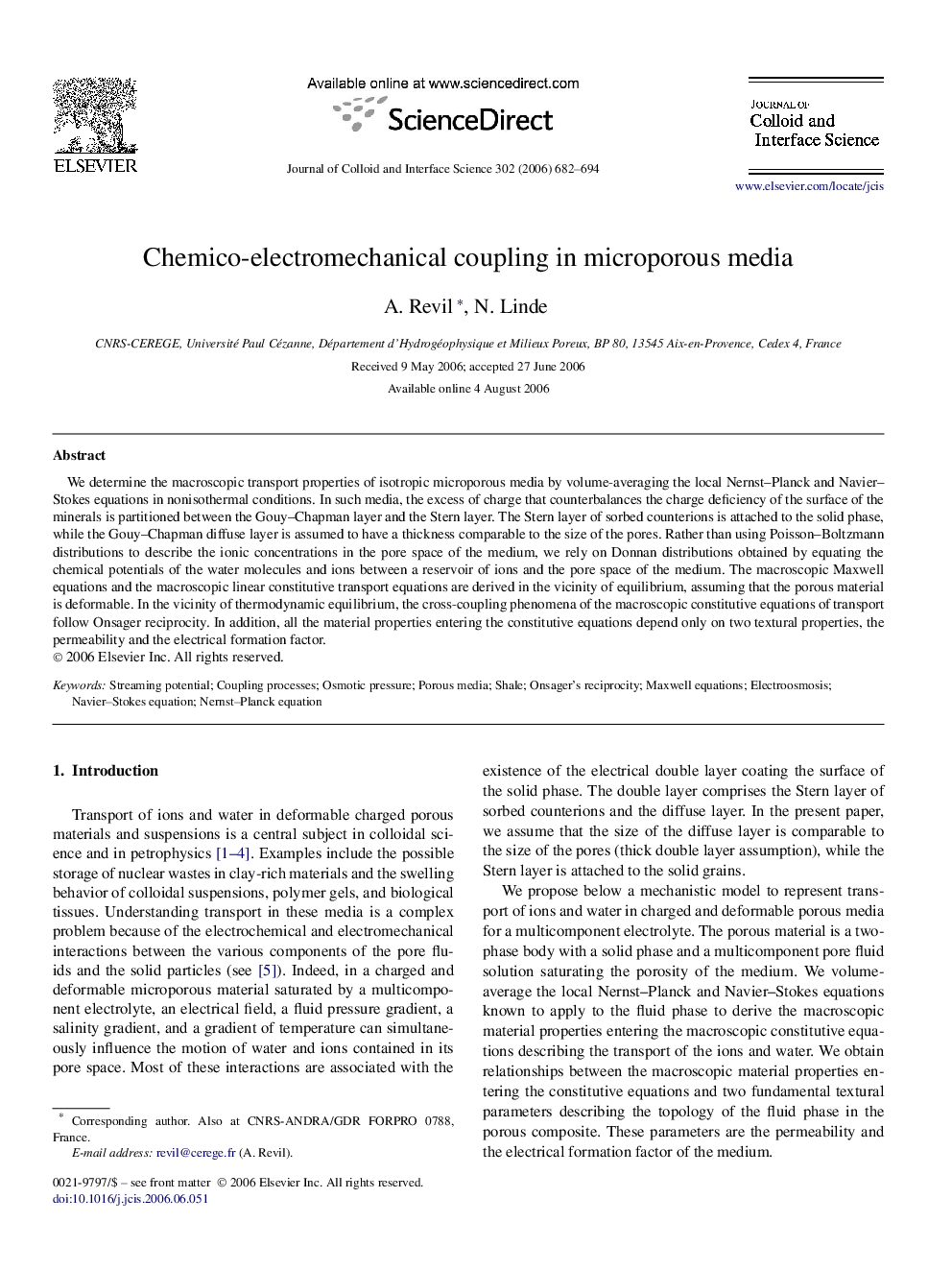| Article ID | Journal | Published Year | Pages | File Type |
|---|---|---|---|---|
| 612943 | Journal of Colloid and Interface Science | 2006 | 13 Pages |
We determine the macroscopic transport properties of isotropic microporous media by volume-averaging the local Nernst–Planck and Navier–Stokes equations in nonisothermal conditions. In such media, the excess of charge that counterbalances the charge deficiency of the surface of the minerals is partitioned between the Gouy–Chapman layer and the Stern layer. The Stern layer of sorbed counterions is attached to the solid phase, while the Gouy–Chapman diffuse layer is assumed to have a thickness comparable to the size of the pores. Rather than using Poisson–Boltzmann distributions to describe the ionic concentrations in the pore space of the medium, we rely on Donnan distributions obtained by equating the chemical potentials of the water molecules and ions between a reservoir of ions and the pore space of the medium. The macroscopic Maxwell equations and the macroscopic linear constitutive transport equations are derived in the vicinity of equilibrium, assuming that the porous material is deformable. In the vicinity of thermodynamic equilibrium, the cross-coupling phenomena of the macroscopic constitutive equations of transport follow Onsager reciprocity. In addition, all the material properties entering the constitutive equations depend only on two textural properties, the permeability and the electrical formation factor.
Graphical abstractThe coupled constitutive equations describing the transport of ions and water in a microporous deformable medium are obtained by volume-averaging the Nernst–Planck and Navier–Stokes equations.Figure optionsDownload full-size imageDownload as PowerPoint slide
